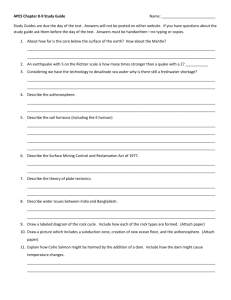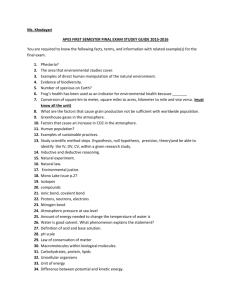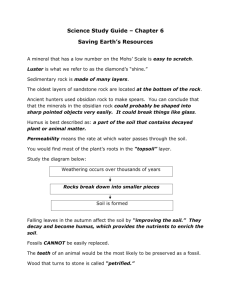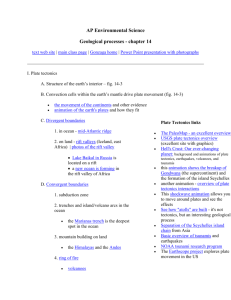Physical Properties of Soil & Rock Formations in the - SETI-2-2013
advertisement
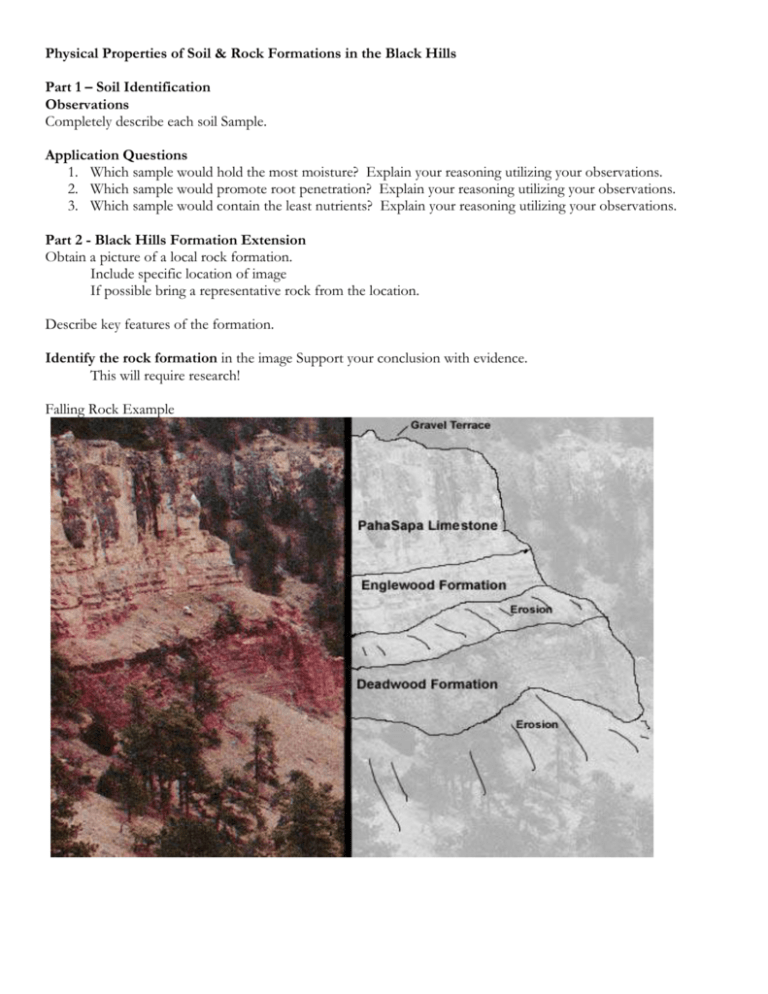
Physical Properties of Soil & Rock Formations in the Black Hills Part 1 – Soil Identification Observations Completely describe each soil Sample. Application Questions 1. Which sample would hold the most moisture? Explain your reasoning utilizing your observations. 2. Which sample would promote root penetration? Explain your reasoning utilizing your observations. 3. Which sample would contain the least nutrients? Explain your reasoning utilizing your observations. Part 2 - Black Hills Formation Extension Obtain a picture of a local rock formation. Include specific location of image If possible bring a representative rock from the location. Describe key features of the formation. Identify the rock formation in the image Support your conclusion with evidence. This will require research! Falling Rock Example Teacher Notes: Part 1 Brainstorm with students about different ways to describe soil Description should include Particle size, color, Feel Method Samples (Clay, Sand, loam, silt) See textural triangle for options Contact Local extension office for samples ?? Feel Method Fine-Textured Soils: form long, shiny, sticky, pliable ribbons dry clods are very hard Medium-Textured Soils: ribbons not strong, not gritty wet soils feel floury when dry Coarse-Textured Soils: no ribbons, gritty feel some mineral particles are visible Part 2 Resources stratigraphic column of the Black Hills http://serc.carleton.edu/images/research_education/nativelands/pineridge/stratcolumn.gif Geologic cross section of the Black Hills http://serc.carleton.edu/images/research_education/nativelands/pineridge/geocs.gif results Saturday August 3rd, 2013 Reflection Today’s activities challenged my comfort level. My knowledge on ranching, geology and botany is very limited. Most of the content was something I have not seen before or have not worked with in too many years to count. Post Activities I was very impressed with Dave and Tate Ollilia. Dave describing range management and agriculture connections was great. Bringing these applications into my classroom would help students, even city kids, find value in many chemistry concepts. I hope to extend my understanding in the future. The preserved plant mounts were beautiful and amazing! I would frame them. I enjoyed creating the spreadsheet for the data analysis but I am weird like that. I don’t see a way to bring these activities into Chemistry or Physics. The geology of the Black Hills is very complex. I think bring this into the classroom would help students become more engaged in lessons. I created the Soil and Formation lesson to bring some of this into my chemistry class however I will be learning right along with the students as we conduct this lesson. The vernier pH and conductivity probes were new to me as well. We use digital pH probes at school and seem to have fewer problems with them than we did. I still am unsure what we are getting with the conductivity probe.




